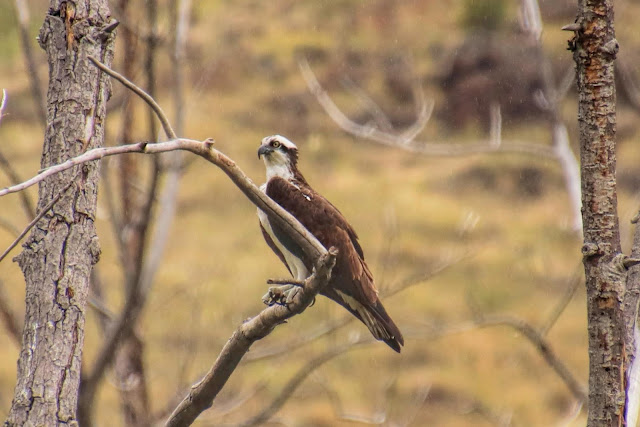The osprey is one of my favorites because one of the early pairs to call Elgin home built their nest in a bank of lights above the high school football field, just across the field from the classroom where I taught for 26 years. That was about 25 years ago. After the pair raised two chicks that summer and migrated in September, the local power company and lumber mill provided a crane and manpower to build a wooden platform to attach above the lights and to move the nest to the platform. Every year since that time, the birds have returned by the end of spring break, added to their nest, and raised one or two chicks right above the 200 meter mark on the high school track. Generally, before school begins in the fall, the birds migrate to Central or South America...first the female (who has spent interminable hours and days on that nest in every type of weather), then the male. The chicks fly last.
Four years ago, my sister and her husband had a 30-40 ft. pole and metal platform set up only yards from their back patio. Nothing happened; the wildlife experts presumed that the nearby pine trees were too tall, providing perching areas for predators and annoying crows. However, last year, a young pair chose the platform, built a sparse nest and hatched 3 chicks. One died during the summer, most likely because it was tangled in baling twine the parents had used in building the nest. Jack and Diane raised Aspen and Pine, helped them fledge, and flew south in September. This spring, they returned again and raised three chicks, Sage, Dilly, and Thyme. The neighbors could hear their noisy "talking" and see them fight off obnoxious crows and other ospreys.
This image of what is most likely a young osprey sitting high in a tree beside the Imnaha River in the remote eastern Wallowa County. Either the bird has separation anxiety or the fishing is good.

1 comment:
Lots of them around the wetlands and the rivers here. I enjoy watching them.
Post a Comment